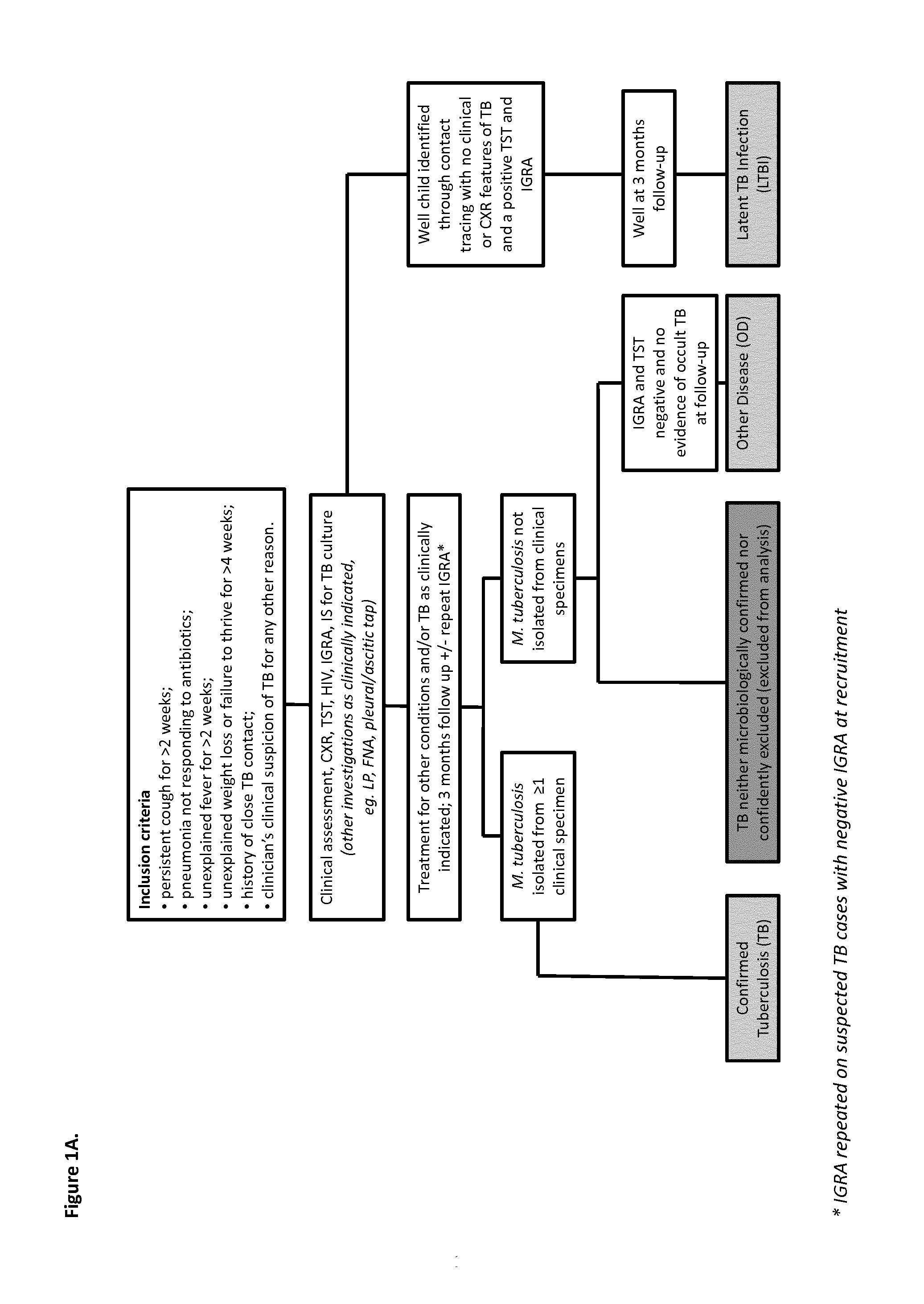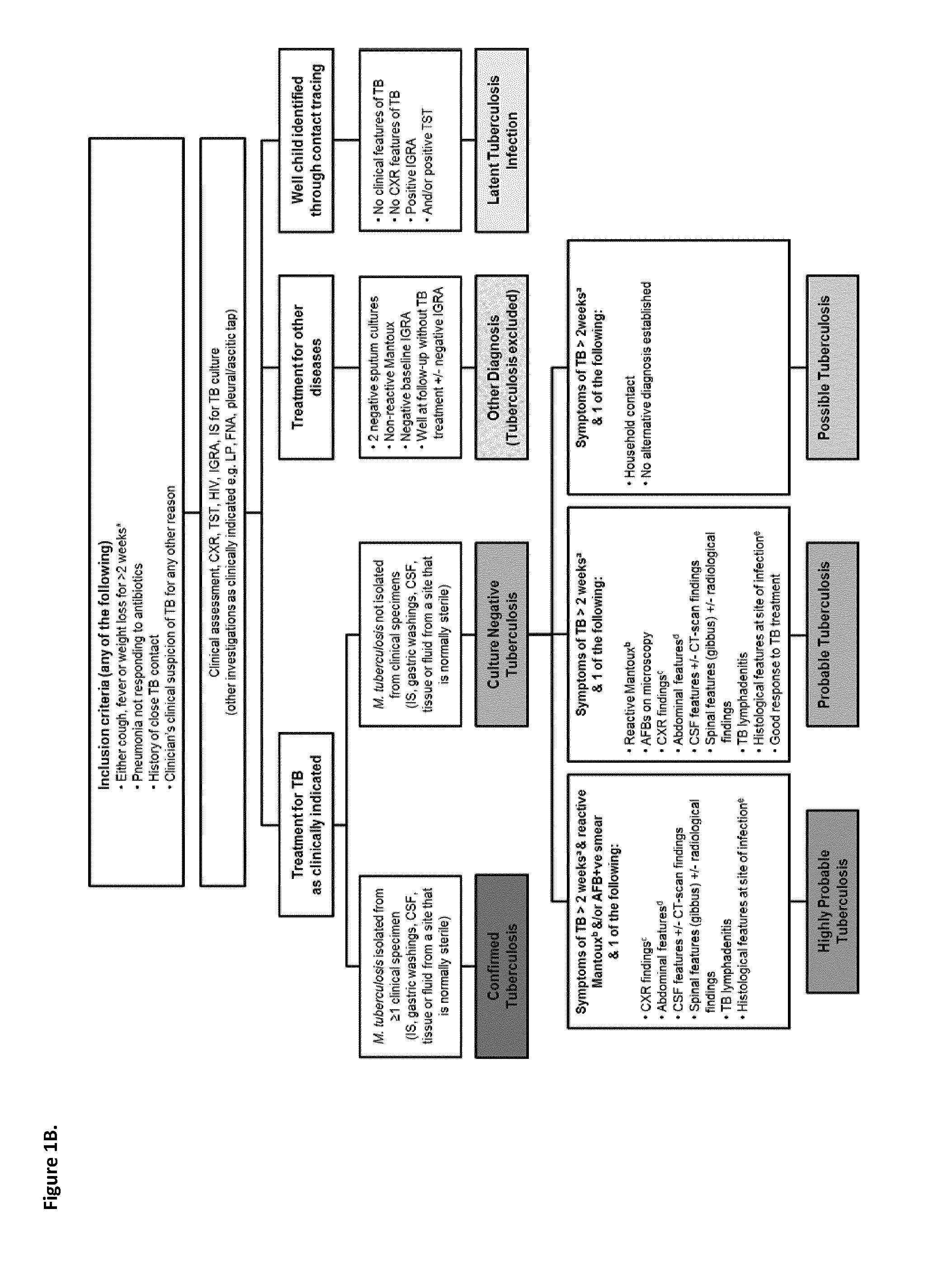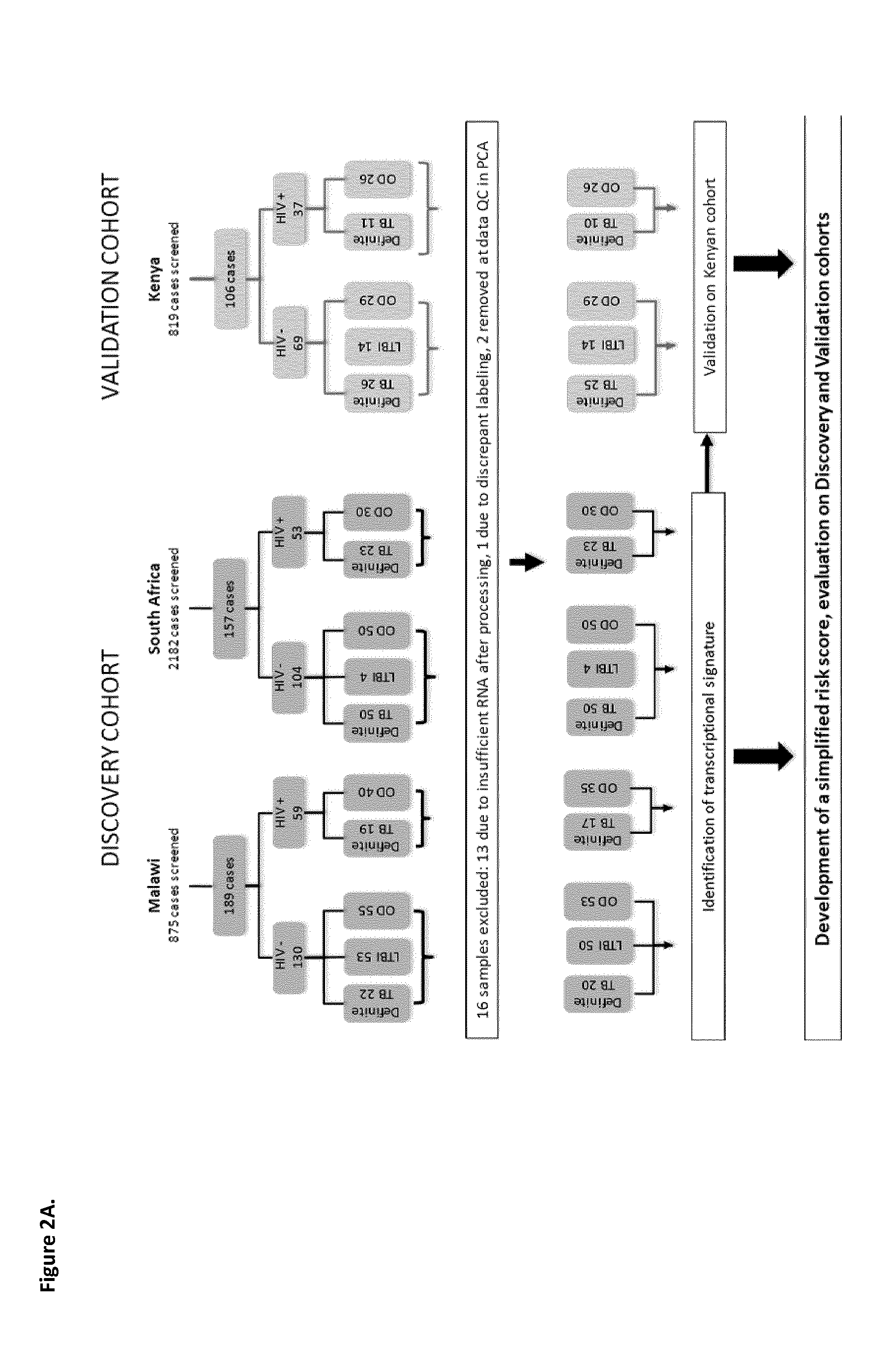Method of detecting active tuberculosis in children in the presence of a co-morbidity
a technology of active tuberculosis and co-morbidity, which is applied in the field of detecting active tuberculosis in children in the presence of a co-morbidity, can solve the problems of antibiotic resistance, difficult treatment, and long course of multiple antibiotics
- Summary
- Abstract
- Description
- Claims
- Application Information
AI Technical Summary
Benefits of technology
Problems solved by technology
Method used
Image
Examples
examples
Method
Study Sites and Patient Cohorts
[0215]In order to enable generalisation of our findings to African countries with differing prevalence of HIV, malaria, parasitic infections and differing environmental exposures that might affect transcriptional profiles, we established prospective cohorts of children undergoing investigation for TB in three sub-Saharan African countries with differing endemic diseases (FIG. 2A).
[0216]We used a “discovery cohort” comprising children presenting with suspected TB to hospitals in South Africa and Malawi to identify RNA-transcript signatures associated with active TB. We then assessed performance of these signatures in an independent “validation cohort” of children presenting with suspected TB to hospitals in Kenya. The overall study design is shown in FIG. 1B. Details of study sites are provided below and FIGS. 8a, b, c.
Red Cross War Memorial Children's Hospital, Cape Town, South Africa (SA)—SA has one of the highest paediatric TB incidence rates ...
PUM
| Property | Measurement | Unit |
|---|---|---|
| temperature | aaaaa | aaaaa |
| temperature | aaaaa | aaaaa |
| volumes | aaaaa | aaaaa |
Abstract
Description
Claims
Application Information
 Login to View More
Login to View More - R&D
- Intellectual Property
- Life Sciences
- Materials
- Tech Scout
- Unparalleled Data Quality
- Higher Quality Content
- 60% Fewer Hallucinations
Browse by: Latest US Patents, China's latest patents, Technical Efficacy Thesaurus, Application Domain, Technology Topic, Popular Technical Reports.
© 2025 PatSnap. All rights reserved.Legal|Privacy policy|Modern Slavery Act Transparency Statement|Sitemap|About US| Contact US: help@patsnap.com



